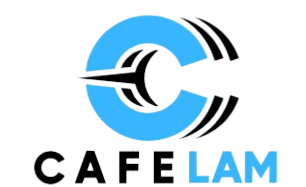In today’s fast-moving world, we are faced with thousands of micro-decisions every day, such as what to eat, what to wear, when to reply to an email, and which of the countless products vying for our attention deserve a place in our lives. This constant mental juggling is what psychologists call “decision fatigue,” and it impacts everything from our health to our financial well-being.
The Rise of Decision Fatigue
The digital era has given us endless choices. Whether scrolling through an online store or standing in front of a supermarket shelf, options are everywhere. Paradoxically, the more choices we have, the harder it becomes to make one. Studies show that too many decisions can lead to mental exhaustion, impulsive buying, or avoiding choices altogether. For businesses, this means consumers may walk away overwhelmed instead of satisfied.
A 2023 study on consumer behavior revealed that people who face more than five product options for the same category are 60% more likely to abandon their cart altogether. The reality is that unlimited choices don’t empower us; they often paralyze us.
Why Too Many Options Hurt More Than Help
People used to see endless choices as freedom. But in reality, unlimited choice often creates stress. We second-guess our purchases, worry about missing out on better deals, or feel guilty when products don’t meet expectations. Over time, this erodes consumer trust and contributes to a cycle of dissatisfaction.
Decision fatigue also influences our health. After making a hundred small decisions in a day, we may opt for convenience over quality, choosing fast food instead of a home-cooked meal or skipping exercise for the comfort of the couch. In workplaces, it can lead to poor strategic calls or rushed approvals, all because trivial decisions drain mental energy.
Smarter Shopping in the Digital Age
The solution isn’t fewer choices but better ways to navigate them. Here are some strategies to shop smarter:
- Set Priorities First – Before browsing, identify your top needs. This creates a mental filter that prevents distractions.
- Trust Curated Recommendations – Platforms and guides that curate products, whether for lifestyle, health, or technology, save time and reduce stress.
- Limit Your Browsing Time – Allocate specific time slots for shopping to avoid fatigue and impulse purchases.
- Compare Value, Not Just Price – A slightly higher cost may be worth it if the product offers durability, quality, or better long-term satisfaction.
- Use Decision Shortcuts Wisely – Rely on brand reputation, expert reviews, or sustainability labels as trusted shortcuts without over-researching.
Innovation and the Future of Consumer Choice
The good news is that companies are responding to consumer overwhelm by offering more streamlined, user-friendly experiences. From personalized product recommendations to subscription models that simplify reordering essentials, the future of shopping is shifting toward convenience and clarity.
Subscription boxes for fitness gear, curated skincare bundles, or AI-driven personal shopping apps are just a few examples of how innovation is cutting through the noise. These services don’t just save time; they help people feel more confident about their purchases.
One area where innovation is particularly evident is in lifestyle alternatives. For example, some adults looking to move away from traditional habits are exploring innovative vape options as part of a broader trend toward products that blend technology with everyday wellness. These types of alternatives illustrate how industries are adapting to modern consumer needs, offering variety without overwhelming choice.
Business Implications: Building Trust Through Simplicity
For businesses, the lesson is clear: consumers no longer want endless choice. They want a relevant choice. Brands that prioritize clarity, personalization, and ease of decision-making are more likely to build long-term trust. Minimalist design, intuitive navigation, and transparent product descriptions all play a role in reducing friction.
Companies like Apple have long embraced this principle. Instead of offering dozens of product variations, they streamline their lineup and focus on creating a clear distinction between each product’s purpose. This eliminates confusion while still giving customers meaningful options.
Health and Lifestyle Connections
Decision fatigue isn’t limited to consumer behavior; it’s tied closely to lifestyle and wellness. Every time we make a choice, we use up mental energy. That’s why successful people like Steve Jobs and Barack Obama often limited their wardrobe choices to avoid wasting energy on trivial decisions.
The same principle applies in everyday life. Meal prepping reduces the stress of deciding what to cook. Setting a weekly fitness routine eliminates the daily debate about whether or not to exercise. These small changes protect mental energy, making it easier to focus on the decisions that really matter.
Practical Ways to Reduce Decision Fatigue
Beyond shopping, here are a few life strategies to help reduce daily decision fatigue:
- Automate Repetitive Choices – Schedule bill payments or set up recurring orders for household essentials.
- Simplify Your Wardrobe – A capsule wardrobe limits unnecessary daily decisions.
- Create Morning and Evening Routines – Having structured habits reduces unnecessary thinking.
- Practice Mindfulness – Taking small breaks helps reset mental energy, improving the quality of decisions throughout the day.
The Bigger Picture: Health, Business, and Balance
Decision fatigue sits at the crossroads of business, health, and daily life. For businesses, simplifying consumer pathways builds trust and loyalty. For individuals, being mindful of our decisions, what we buy, what we consume, and how we spend our time can reduce stress and improve overall well-being.
At its core, shopping smarter is about balance. It’s about knowing when to filter out the noise, when to embrace innovation, and when to step back and give ourselves the mental space to choose wisely. In a world of endless choice, clarity is the true luxury.
Conclusion
Decision fatigue may be an unavoidable reality of modern life, but it doesn’t have to control us. By adopting smarter shopping strategies, embracing innovative solutions, and consciously reducing unnecessary daily choices, we can regain control over our mental energy.
For businesses, the path forward is clear: help consumers cut through the clutter by offering curated, meaningful options. For individuals, it’s about practicing awareness, creating systems, and giving ourselves permission to prioritize what truly matters. In doing so, we transform choice from a burden into an opportunity for better living.







